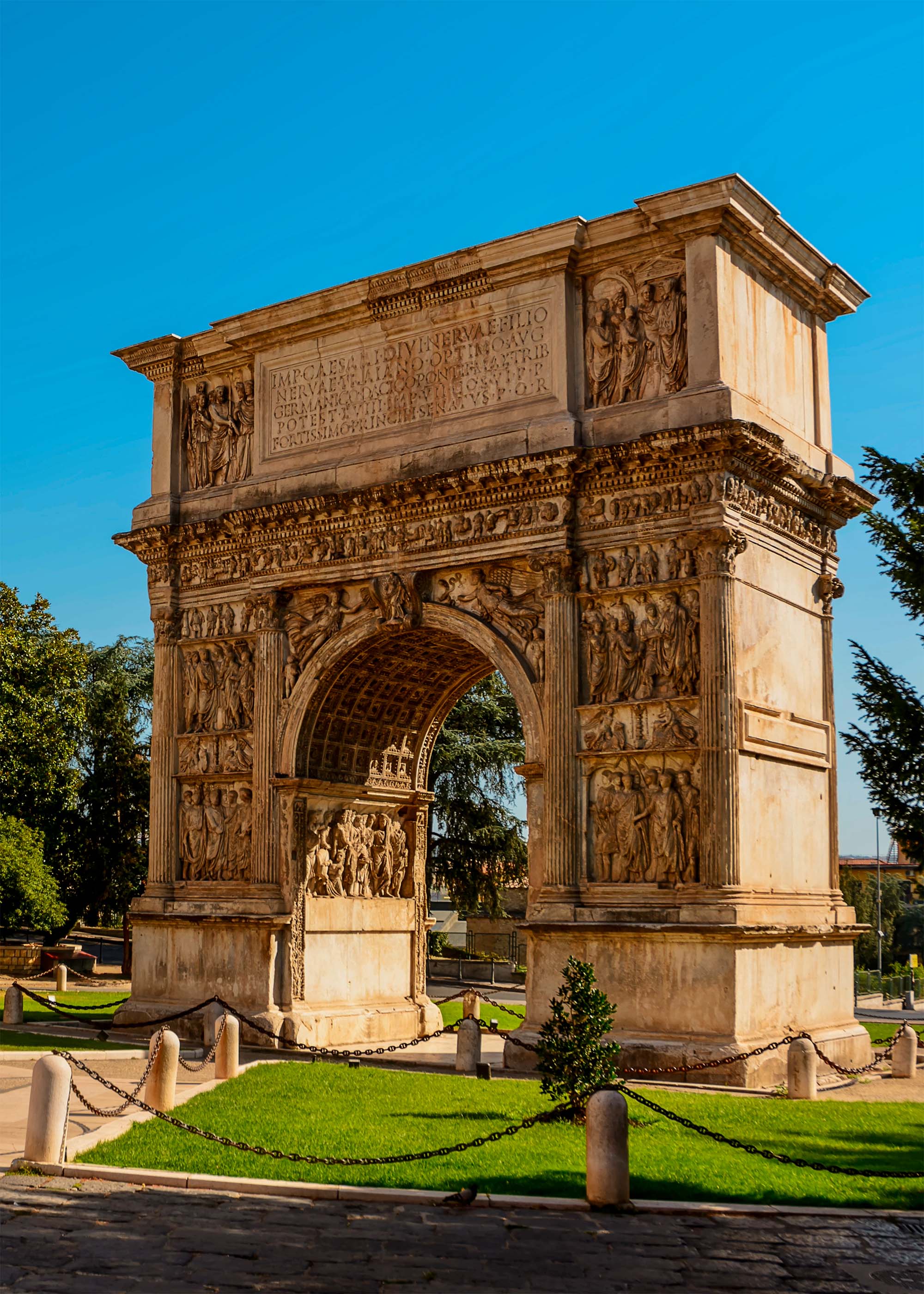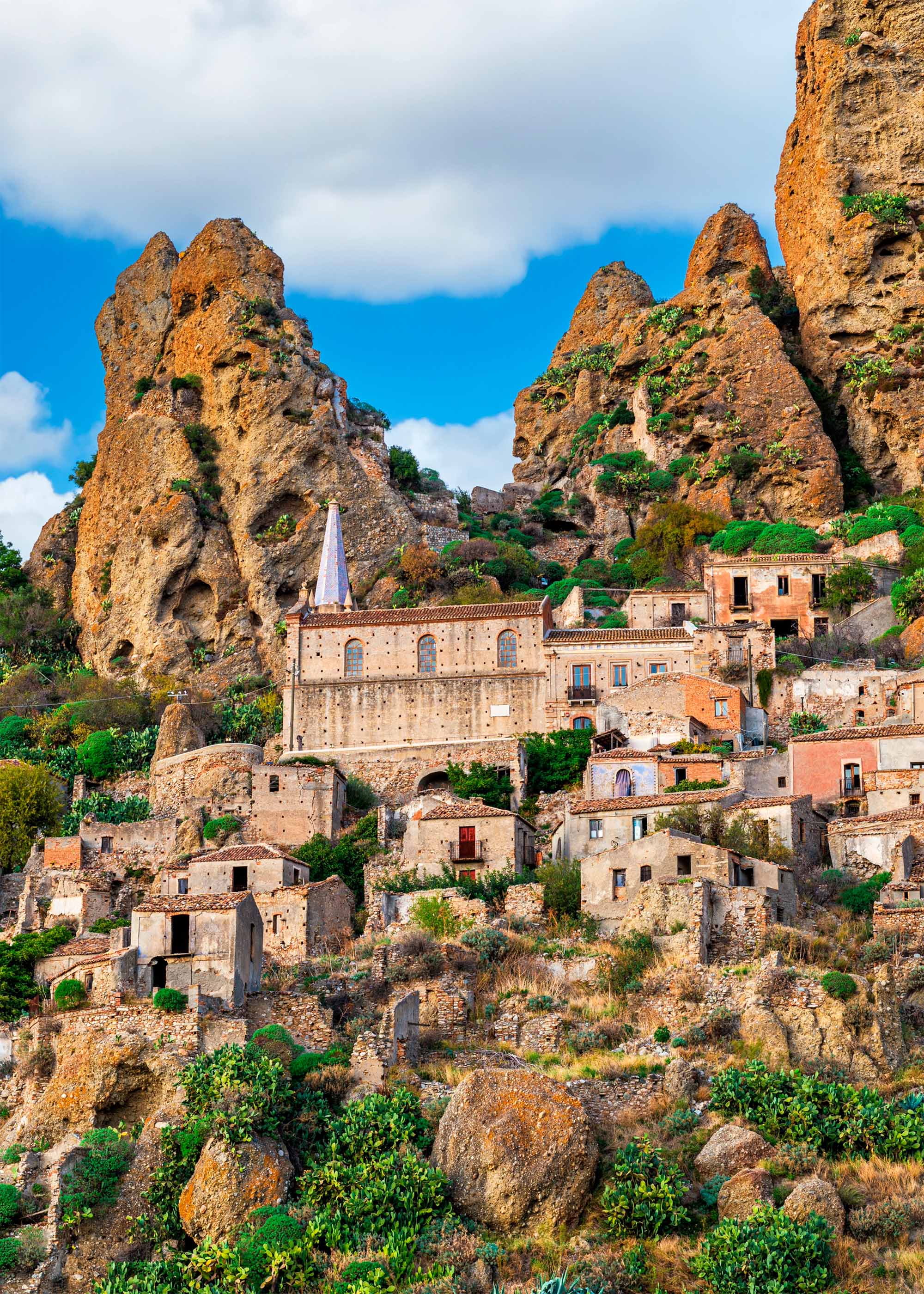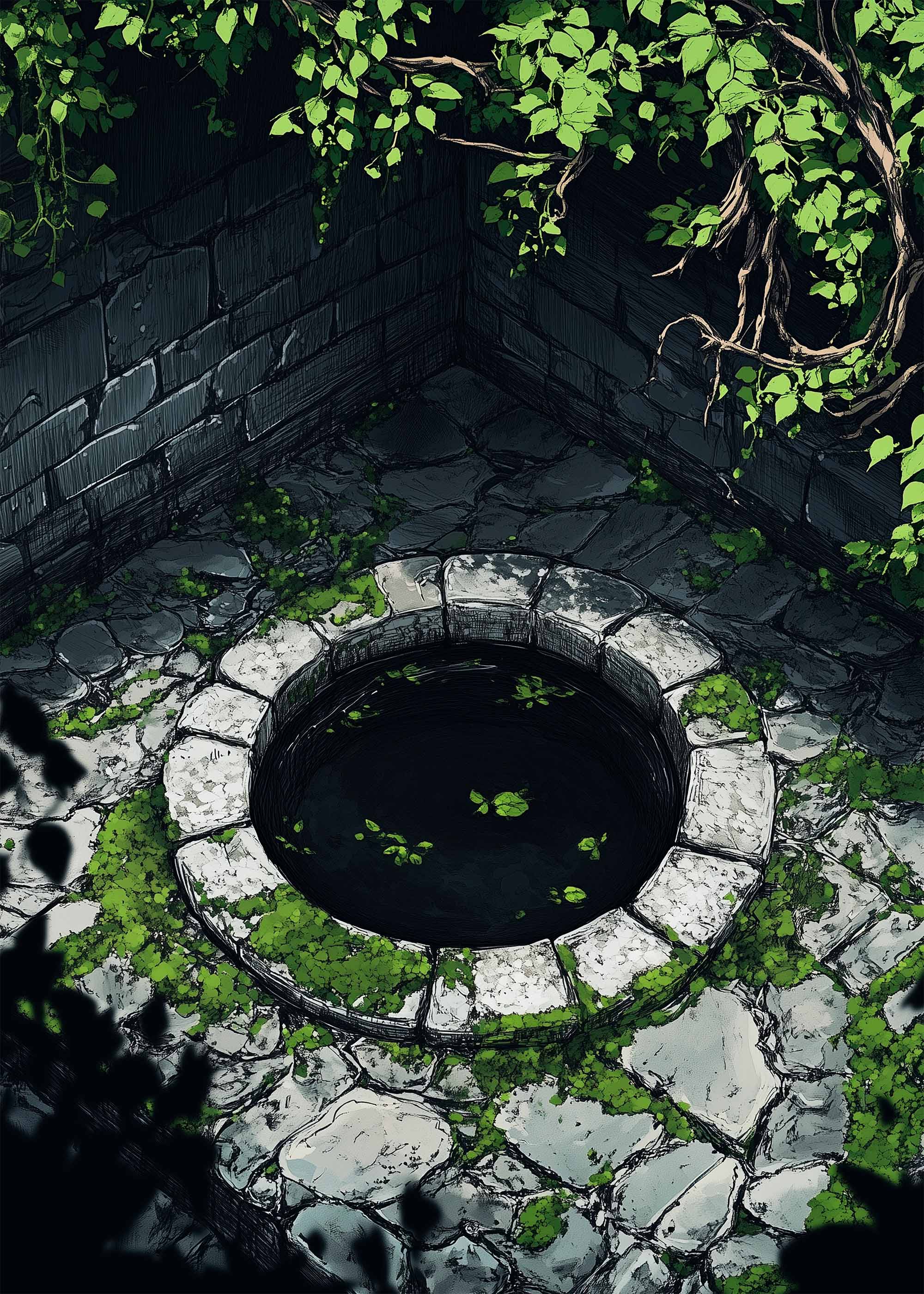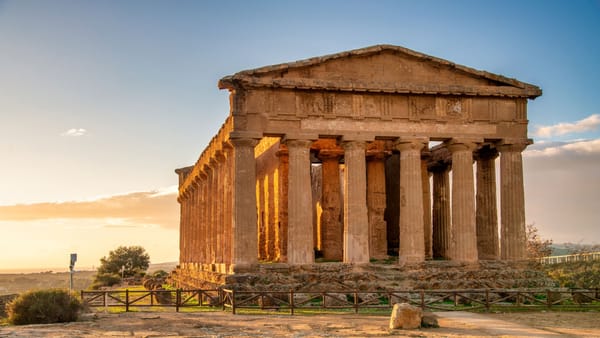The sun began rising over the bay of Naples, casting a warm golden hue over the city's rooftops. The streets were still quiet, save for the gentle hum of a single engine that belonged to "Diario 500," a bright blue Fiat 500 with an infectious spirit of adventure. Today was no ordinary day. "Diario 500" had embarked on countless journeys across Southern Italy. Still, today, it was setting off on a quest that resonated with the echoes of history—a quest to uncover the secrets of the Kingdom of the Two Sicilies.
The Kingdom of the Two Sicilies, once a powerful and prosperous realm that unified the southern territories of Italy, had left an indelible mark on the landscape and culture of the region. Its legacy was woven into the very fabric of the land, from the grand palaces of Naples to the ancient ruins scattered across Calabria, Sicily, and Puglia. "Diario 500" had always felt a deep connection to this history, as if its wheels were meant to retrace the paths once traveled by kings, queens, soldiers, and scholars.
As "Diario 500" cruised through the winding streets of Naples, it felt a thrill of excitement. The city's mix of ancient and modern was the perfect starting point for this journey. Naples had been the capital of the Kingdom of the Two Sicilies, and its streets were steeped in the stories of that era. Passing by the imposing Castel Nuovo, with its grand arches and towering battlements, "Diario 500" could almost hear the clang of swords and the chatter of courtiers from centuries past.
But this journey was about more than just revisiting old landmarks. "Diario 500" was on a mission to uncover the lesser-known secrets of the kingdom—the hidden histories, the forgotten tales, and the places that held the true spirit of the Two Sicilies. With a map of the old kingdom spread out on its dashboard, "Diario 500" set its sights on the first destination: the ancient town of Benevento, nestled in the hills to the northeast of Naples.

The Witches of Benevento
The road to Benevento wound through rolling hills and lush valleys, offering a picturesque view of the countryside that was as timeless as the kingdom itself. "Diario 500" enjoyed every twist and turn, its engine purring contentedly as it went deeper into the heart of the old kingdom. Benevento, a town with roots stretching back to Roman times, was once a vital part of the Kingdom of the Two Sicilies. But it wasn't its strategic importance that drew "Diario 500" here—it was the town's connection to a mysterious and intriguing legend.
Benevento was known as the city of witches. For centuries, the town had been shrouded in tales of witchcraft, with stories of nocturnal gatherings under a sacred walnut tree where witches would dance, cast spells, and commune with the spirits. These legends had persisted through the ages, blending with the town's history and giving Benevento an air of mystique that intrigued locals and visitors.
As "Diario 500" rolled into the town's cobblestone streets, it could sense the layers of history that enveloped Benevento. The roads were narrow and winding, lined with ancient buildings that seemed to whisper secrets to those who passed by. The car made its way to the Piazza Risorgimento, the heart of the town, where the imposing Rocca dei Rettori towered over the square.

Pausing in the castle's shadow, "Diario 500" reflected on the stories it had heard about this place. The witches of Benevento were said to have been practitioners of an ancient, pre-Christian religion, blending pagan rituals with local traditions. Their gatherings were believed to occur under a massive walnut tree on the banks of the Sabato River. This tree, known as the "Noce di Benevento," was the epicenter of the town's mystical reputation.
"Diario 500" followed the witches' trail to where the walnut tree once stood. The path led to a quiet, secluded area just outside the town, where the river flowed gently, and the air was thick with the scent of nature. Though the original walnut tree was long gone, the spirit of the place remained. "Diario 500" parked beneath the canopy of trees that had grown in its place, feeling the weight of history and legend in the air.
With its aura of mystery, this place was a testament to the blending of cultures and beliefs that had shaped the Kingdom of the Two Sicilies. It reminded us that the kingdom was not just a political entity but a living, breathing tapestry of traditions, stories, and people.
The Ghosts of Calabria
Leaving Benevento behind, "Diario 500" continued its journey southward towards Calabria's rugged and beautiful region. Calabria, the toe of Italy's boot, was a land of contrasts—stunning coastlines, dramatic mountains, and ancient towns that clung to the cliffs. It was also a region steeped in history, with roots that went back to the days of Magna Graecia when Greek settlers established colonies along the coast.
As "Diario 500" traversed the narrow roads that hugged the coastline, it couldn't help but feel a sense of awe. The landscape was breathtaking, with the turquoise waters of the Tyrrhenian Sea on one side and the towering mountains on the other. The region's wild beauty was matched only by its rich history, and "Diario 500" was eager to explore the secrets hidden in the hills and valleys of Calabria.
One of the most intriguing tales from this region was that of the ghost village of Pentedattilo. Nestled in the Aspromonte mountains, Pentedattilo was once a thriving village, but today, it stands abandoned, a haunting reminder of the past. The village, named after the five-fingered rock formation that looms above it, was the site of a brutal massacre in the 17th century—a tragedy that has left a lasting imprint on the town's history.
As "Diario 500" approached Pentedattilo, it could see the jagged rock formation rising in the distance, like a hand reaching out from the earth. The road to the village was narrow and winding, with sharp turns that seemed to mirror the twists and turns of the village's history. When "Diario 500" finally arrived at the entrance to Pentedattilo, the village was eerily silent, as if time had stopped centuries ago.

The houses, built from stone and clinging to the mountainside, were empty and crumbling, their windows like hollow eyes staring out at the landscape below. "Diario 500" carefully navigated the narrow streets, its engine echoing off the stone walls. There was a palpable sense of abandonment and resilience—this village, though deserted, had endured for centuries, weathering natural and human-made disasters.
The story of the massacre that took place here was one of love, betrayal, and revenge. In 1686, members of the noble Alberti family were brutally murdered by their rivals, the Abenavoli family, in a bid for power and control. The massacre left the village cursed, and over time, the residents abandoned their homes, leaving Pentedattilo to the elements.
As "Diario 500" wandered through the empty streets, it could almost feel the presence of the ghosts that were said to haunt the village. The tragedy of Pentedattilo was a stark reminder of the darker chapters in the history of the Kingdom of the Two Sicilies. This history was about glory, prosperity, conflict, and loss.
But even in its abandoned state, Pentedattilo had a certain beauty, a testament to the resilience of the people who had once called it home. It was a place where the past was still very much alive, and "Diario 500" felt privileged to witness it.
The Majesty of Palermo
With a heavy heart, "Diario 500" left Calabria behind and made its way across the Strait of Messina to the island of Sicily. Sicily was the Kingdom of the Two Sicilies' crown jewel, a land rich in history, culture, and natural beauty. In the vibrant city of Palermo, it was here that "Diario 500" hoped to uncover the grandest secrets of the kingdom.
Palermo, the capital of Sicily, was a city that had seen it all—conquered by the Phoenicians, the Greeks, the Romans, the Arabs, and the Normans, each civilization leaving its mark on the city's architecture, culture, and people. It was a city where East met West, the old world collided with the new, and the spirit of the Kingdom of the Two Sicilies was still alive.
As "Diario 500" navigated the bustling streets of Palermo, it marveled at the city's diversity. The architecture was a stunning blend of different styles—Arab-Norman palaces, Baroque churches, and Byzantine mosaics, all standing side by side in a vibrant history mosaic. The streets were alive with the sounds of people, vendors calling out their wares, and street food wafting through the air.
One of the most iconic landmarks in Palermo was the Palazzo dei Normanni or the Norman Palace. It once served as the seat of the Kings of Sicily and later the Kings of the Two Sicilies. The palace's imposing towers and intricate mosaics symbolized the kingdom's power and prestige.
"Diario 500" parked in front of the palace, its bright blue exterior strikingly contrasting the ancient stone walls. Gazing up at the palace, it imagined the grandeur of the court that had once gathered here—the kings and queens, the knights and nobles, all dressed in their finest attire, discussing matters of state and plotting their next move.

But Palermo's secrets weren't confined to its grand palaces. The city's streets and alleys were filled with hidden gems waiting to be discovered by those willing to venture off the beaten path. "Diario 500" decided to explore the markets of Palermo, starting with the famous Ballarò market.
The market was a sensory overload, with stalls piled high with fresh produce, seafood, and spices. The air was filled with the sounds of vendors calling out their prices and the chatter of locals bargaining for the best deals. As "Diario 500" rolled through the market's narrow alleys, it felt connected to the city and its people. This was the true heart of Palermo—a place where the old traditions of the kingdom were still alive and thriving.
From the markets, "Diario 500" went to the Catacombs of the Capuchins, which held one of Palermo's most macabre secrets. The catacombs were a vast underground network of tunnels lined with the mummified remains of thousands of people, from monks to nobles. The catacombs were a reminder of the kingdom's complex relationship with death and the afterlife—a place where the dead were preserved, not just as a testament to their faith but as a symbol of the kingdom's enduring legacy.
As "Diario 500" descended into the catacombs, it felt a chill in the air. The narrow corridors were lined with skeletons and mummies, some still dressed in their finest clothes as if waiting for the day they would be called back to life. It was a haunting and humbling experience, a stark reminder of the passage of time and the fragility of life.
Leaving the catacombs behind, "Diario 500" emerged into the bright Sicilian sun, its engine purring softly as it reflected on the day's discoveries. Palermo had revealed many of its secrets, but "Diario 500" knew that there was still more to be uncovered, hidden in the shadows of the past.
The White Towns of Puglia
With its journey through Sicily complete, "Diario 500" turned its sights northward, crossing back to the mainland and heading towards the enchanting region of Puglia. Known for its stunning coastline, olive groves, and whitewashed towns, Puglia played a unique role in the history of the Kingdom of the Two Sicilies.
As "Diario 500" traveled through the region, it was struck by the stark beauty of the landscape. The white towns of Puglia, perched on hilltops and overlooking the Adriatic Sea, were a sight to behold. These towns, with their narrow streets and whitewashed buildings, had been a refuge for the kingdom's nobility during times of conflict, and they still retained an air of quiet elegance.
One of the most iconic towns in Puglia was Alberobello, famous for its trulli houses—unique, cone-shaped structures made from limestone. As "Diario 500" rolled into Alberobello, it was captivated by the sight of these ancient dwellings, which looked like something out of a fairytale. The Trulli, with their white walls and grey stone roofs, were a testament to the ingenuity of the people who had built them, using local materials to create functional and beautiful homes.
"Diario 500" parked in the heart of the town and took some time to explore the winding streets, admiring the Trulli up close. Each house was unique, with its distinct charm, and many were still inhabited, their residents carrying on the traditions of their ancestors. The town had a peaceful, almost timeless quality as if it had been untouched by the passage of time.

From Alberobello, "Diario 500" continued its journey to Ostuni, another of Puglia's famous white towns. Known as "La Città Bianca," or the White City, Ostuni was a dazzling sight, its whitewashed buildings gleaming in the sunlight. The town, perched on a hilltop, offered stunning views of the surrounding countryside and the Adriatic Sea beyond.
As "Diario 500" navigated the narrow streets of Ostuni, it was struck by the sense of history that permeated the town. Though whitewashed and well-preserved, the buildings bore the marks of centuries of use, their walls telling the stories of those who had lived and worked there. With its intricate façade and stunning interior, the town's cathedral reminded the kingdom of its rich religious heritage, where faith and art had come together to create something extraordinary.
But Ostuni's secrets weren't just found in its architecture. The town was also home to one of the region's most ancient olive groves, where hundreds of years old trees still produced the finest olive oil in Italy. "Diario 500" made its way to one of these groves, where the twisted, gnarled trunks of the olive trees stood like silent sentinels, watching over the land.
It reflected on its journey as "Diario 500" parked beneath the shade of one of these ancient trees. From the bustling streets of Naples to the ghostly ruins of Pentedattilo, from the grandeur of Palermo to the whitewashed towns of Puglia, the car had uncovered the many secrets of the Kingdom of the Two Sicilies—a kingdom that was more than just a place, but a living, breathing entity that still existed in the hearts and minds of the people who lived there.

The Final Secret
With its journey nearing its end, "Diario 500" made one final stop—an ancient, hidden place that held the key to the greatest secret of the Kingdom of the Two Sicilies. Deep in the mountains of Campania, in a remote and isolated valley, lay the ruins of an ancient monastery, forgotten by time and the outside world.
The monastery was once a center of learning and spirituality. Monks dedicated their lives to preserving the ancient world's knowledge. It was here that "Diario 500" hoped to find the final piece of the puzzle, the secret that would unlock the true story of the Kingdom of the Two Sicilies.
As "Diario 500" made its way up the narrow mountain road, the air grew calmer, and the landscape more rugged. The trees grew taller, their branches forming a canopy overhead that blocked the sun. The road was steep and winding, and "Diario 500" had to take care as it navigated the twists and turns.
Finally, the car arrived at the monastery's entrance. Its stone walls were weathered and worn by centuries of exposure to the elements. The monastery was in ruins, its once-grand halls now empty and silent; the only sounds were the rustle of the wind and the distant cry of a bird.
But despite its dilapidated state, the monastery held an air of mystery and power. As "Diario 500" rolled through the crumbling archway and into the courtyard, it could feel the weight of history bearing down on it. This was a place where great minds had once gathered, where the kingdom's secrets had been recorded and preserved for future generations.

A stone well stood in the courtyard's center, its surface covered in moss and vines. "Diario 500" knew this well was the key to the monastery's greatest secret. The monks had used it as a hiding place to protect their most precious knowledge from those seeking to destroy it.
As "Diario 500" approached the well, it felt a sense of anticipation. It had been waiting for this moment, the culmination of its journey. Slowly, the car edged closer to the well, its headlights illuminating the dark interior.
And there, at the bottom of the well, was a small, ancient book, its pages yellowed with age but still intact. This was the secret the monks had sought to protect—the true history of the Kingdom of the Two Sicilies, recorded in the handwriting of those who had lived it.
It felt fulfilled as "Diario 500" gazed down at the book. Its journey had been long and arduous, but it had been worth it. The car had uncovered the secrets of the kingdom and, in doing so, had kept the memory of the Kingdom of the Two Sicilies alive.
With the book safely in possession, "Diario 500" began the long journey back to Naples, its engine humming softly as it descended the mountain. The car knew its journey was far from over—there were still many more secrets to uncover and stories to tell. But for now, "Diario 500" was content, knowing that it had played its part in preserving the history of a kingdom that had shaped the world.
As the sun set over the bay of Naples, casting a warm golden hue over the city's rooftops, "Diario 500" drove on, its headlights cutting through the darkness, lighting the way for the next adventure.







